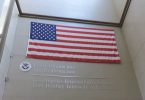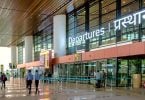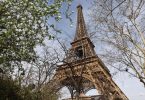It is a nation enveloped by two seas, which spans two continents. This is also a place that harks back as much to the land of the mythical tales of the Arabian Nights, as they do to a modern-day European metropolis. We set off to discover some of the regions and landscapes of Turkey. It was a journey from the coast, to the heart of Anatolia, the Asiatic region of the country that comprises 97 percent of its territory.
While Istanbul is not the capital of the country (it is Ankara), it is nevertheless the most visited. The reason is simply geography; it is rich in historical sites and vibrant, colorful streets that make up the only city in the world whose territory lies on two continents.
Istanbul is both a modern metropolis in the European sense, as it is traditional and true to its Asiatic origins. It goes without saying that a visit here is about a cruise spanning the Black Sea, the Sea of Marmara and the Bosporus Strait, which literally delineates Europe from Asia.
We had reserved a room at the small Hotel Dersaadet, not far from the 17th century Blue Mosque. Its 19th century Ottoman-style wooden façade, comfortable rooms and breakfast terrace overlooking the Marmara Sea was a blissful sight to behold. From the 15th of March to the 25th of November a room here with European breakfast, will set you back some 115 Euro.
In addition to the palace, the mosque and the numerous area museums on the beaten tourist path, there is one site that grabbed our attention. It was an amazing sixth century cathedral-sized cistern, or in Turkish, yerebatan sarnici, which literally lies underneath the city. This grand reservoir was once the source of water of the Byzantine kings, the Topokapi Palace. You can walk through the enormous “engulfed palace” and its waterways thanks to a wooden catwalk imbued with a series of filtered lights.
The experience is made all the more atmospheric as the sounds of classical music which mesh with the echoes, voices and slowly dripping of water.
A mix of some 336 marble Ionic, Corinthian and Doric columns sustains the giant underground dome. During our visit there was even an art exhibition in this unlikely venue. Ironically there was nothing unusual about this as many cultural events take place in this mysterious space whose obscure lighting, water and echoing sounds appeal to the city’s artists.
Our visit to the region of Cappadocia in Anatolia was the destination that we had waited for with much anticipation. This was a landscape of strange cone-shaped rock formations pierced with small Swiss-cheese-like holes. We spent much of two days wandering around this open-air museum, the archeological sites of Goreme National Park and its troglodyte caves, chapels and monasteries where fleeing Christians took refuge in the 4th century. The Hittite people, and many others would subsequently also inhabit these surprising geological formations.
We then headed west to Guzelyurt, in western Cappadocia. The 150km journey was a three-hour ride on public transportation, costing less than 15 Euro. That was better than the 55 Euro taxi fare that we had been offered. It may have taken a tad longer, but this was a good opportunity to mingle. On the bus a man accompanied by his young daughter offered us some nuts that they had just picked from local fields. Seeing me struggling to crack that nut, another passenger simply grabbed it and ably cracked it for me, returning it ready to eat. All this without a word spoken of either English or French… Luckily, he understood my ‘merci’, which means thank you in both Turkish and my mother tongue, French!
We then booked a cell in the one-time monastery that is now the Hotel Kerballa, an inn constructed in 1856 and now recognized as a historic monument. Located in the heart of Guzelyurt it attracts mostly hikers and amateur equestrians. A room here cost a mere 55 Euro for two, a real deal! Breakfast was not included, though, and sets you back an extra 10 Euro.
Our journey ended at Ihlara canyon. This area is located 12km from Guzelyurt and seen ideally from the western banks of the Melendiz River. Doing the trek entirely on foot covers some 14km in a little over five hours. We chose to stop halfway at Belisirma where we lived three hours of bliss in a wondrous natural oasis.
On the banks of the river we began to climb rocks formations and to visit the dens adorned with cave paintings. We came across sheep and shepherds, and photographed astounding geological structures that looked either like the hats that a witch would wear, or simply stunningly high rising rock formations. It was a fitting and blissful end leaving us memories of a journey to an astonishing land on the precipice of east and west.
Born in Montréal in a suitcase, says the legend, Anne Marie Parent has studied tourism management, french litterature, sociology and psychology. She continues to study the lives and cultures of the world in her global travels. She freelances for numerous newspapers and magazines in Québec. Anne Marie recently started a blog on sustainable tourism with her colleague Sylvie Rivard. Her blog: http://blogues.guidesulysse.com/tourisme%2Dresponsable/






















